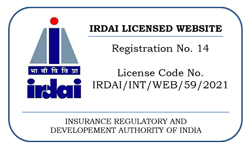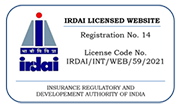Fundamentals of Health Insurance
Health insurance is an essential financial safeguard that enables individuals and families to access vital healthcare services while reducing the burden of overwhelming medical costs. Fundamentally, Health insurance operates through a contractual arrangement between a policyholder and an insurance company. In return for periodic premium payments, the insurer commits to covering a portion of the policyholder’s healthcare expenses as specified in the policy agreement.
Grasping the fundamentals of health insurance requires an understanding of key terminologies and principles.
- Premiums refer to the periodic payments made by individuals to sustain their insurance coverage.
- Deductibles indicate the amount policyholders must pay out-of-pocket before their insurance coverage is activated.
- Copayments and Coinsurance represent the share of medical expenses that policyholders must bear even after fulfilling their deductible.
Health insurance generally includes a broad spectrum of healthcare services such as physician consultations, hospitalization, surgical procedures, prescription drugs, and preventive treatments. The extent of coverage varies significantly depending on the chosen insurance policy and its specific terms and conditions.
Health Insurance Checklist in Bangalore
Individual or Family Coverage Plan
Determine whether the health insurance policy you intend to purchase provides individual or family floater protection. A standalone plan will insure a single household member for an individual assured sum.On the other hand, a family floater health insurance plan will extend coverage to all family members under a shared sum insured.
If you have a small household with young kids, opting for a family plan will be more cost-effective. However, if you are a single adult with aging parents, selecting a individual plan would be a smarter choice.
Sufficient Sum Insured
Evaluate the insured sum of the health Insurance policy you wish to obtain. The insured sum represents the highest amount your insurer will cover during a claim. Hence, it is crucial to ensure that the sum insured of your policy is sufficient to meet all your healthcare expenditures.
Specialists recommend securing a health insurance policy with a minimum sum insured equivalent to half of your yearly earnings. However, avoid choosing an excessively high sum insured, as it will inevitably raise your premium payments.
Level of Protection
Assess the extent of protection provided by the policy you are considering for the premium charged. You should opt for an all-inclusive health insurance plan that extends coverage beyond standard hospitalization expenses. Ideally, your plan should include expenses for outpatient treatments, day care procedures, pre and post-hospitalization costs, AYUSH therapies, virtual consultations, etc. If you are planning to expand your family soon, go for a policy that incorporates maternity coverage.
Absence of Co-Payment Clause
Verify if the plan you favor includes an automatic co-payment clause. For those unaware, copayment is a fixed fraction of the claim amount that you must bear every time you submit a claim. While policies with co-payments tend to be more budget-friendly, they restrict your claim amount in times of medical crises. Thus, it is advisable to choose a plan without co-payment provisions so you can claim the full cost of your hospitalization.
Reduced Waiting Period for Pre-Existing Conditions
Review the waiting period associated with covering pre-existing conditions (PED), such as diabetes, hypertension, asthma, thyroid disorders, high cholesterol, etc. Most medical insurance policies extend coverage for pre-existing conditions only after a waiting period of up to three years. This implies that your insurer will reject any PED-related claims until you have renewed your policy three times. However, several modern health plans now provide PED coverage from the very first day of the policy.
No Restriction on Room Rent
Verify whether your chosen health coverage plan imposes any limitations on hospital room charges or room type. Unfortunately, most health insurance providers do not allow you to select a room of your preference. Instead, they set a limit on the highest permissible room rent or restrict the category of hospital rooms for your stay. If you do not comply with these room rent limitations, you will have to bear additional costs for every service utilized during your hospitalization, leading to a significant financial burden. Therefore, opt for a medical plan with no restrictions on room rent.
Choose Comprehensive Pre and Post-Hospitalization Coverage
Examine the number of days for which pre and post-hospitalization expenses are covered under the plan you intend to purchase. Pre-hospitalization expenses include medical costs incurred before hospital admission, while post-hospitalization expenses cover healthcare costs after being discharged.
However, the duration of coverage for pre and post-hospitalization expenses differs across policies. Ideally, you should go for a health plan that provides coverage for at least 30 days before hospitalization and 60 days after discharge.
No Disease-wise Sub-limits
Check whether the plan you plan to invest in has any specific caps on ailments or medical procedures. Sub-limits define the maximum amount your insurer will pay for the treatment of certain illnesses or surgeries. For instance, if your policy has a sub-limit of ₹1 lakh on advanced procedures, your insurer will not reimburse beyond this amount, even if your total insured sum is ₹10 lakh.
Many times, insurers enforce sub-limits on particular illnesses, reducing the maximum amount you can claim. Hence, it is advisable to choose a health insurance policy that has no disease-specific sub-limits.
Restoration Benefit
Confirm whether the health plan you wish to buy includes the restoration benefit. This feature ensures that your coverage amount is automatically reinstated by 100% before renewal if your original insured sum has been fully or partially exhausted. This advantage is particularly useful for family floater plans, as your coverage gets fully restored even after one family member has utilized the entire insured sum.
While certain policies provide restoration benefits only once per year, others may offer it an unlimited number of times annually. Furthermore, some plans may restrict this benefit for claims related to the same illness. Thus, you should opt for a medical insurance plan that grants unlimited replenishment benefits for both related and unrelated health conditions.
Yearly Medical Screenings
Ensure that the health coverage policy you prefer includes an annual health check-up feature. Several insurers cover the expenses for preventive health screenings each year. This allows you to monitor your well-being and detect potential ailments at an early stage. Thus, choose a health plan that grants you the advantage of yearly medical examinations.
Checklist for Actions to Take After Purchasing Medical Insurance
Below is a checklist of essential steps to follow after securing a medical insurance plan:
- Carefully review your policy document to spot any inaccuracies, including errors in your age, name spelling, policy start date, etc.
- Ensure you receive your health identification card within a few weeks of purchasing the policy. If not received, follow up persistently with the insurer.
- Familiarize yourself with the claim procedure thoroughly so you can effortlessly submit a claim during urgent or scheduled hospital admissions.
- Inform your family members about your mediclaim plan, its coverage advantages, and the claim filing process.
- Keep a digital copy of your health insurance policy on your mobile device or laptop and share it with all your family members.
- Avail of tax exemptions on premiums paid for your health insurance under Section 80D of the Income Tax Act.
- Notify your insurer about your spouse or newborn baby within the specified timeframe if you wish to include them in your policy.
- Set a reminder for your policy renewal date to ensure you don’t miss renewing your plan.



.png)
